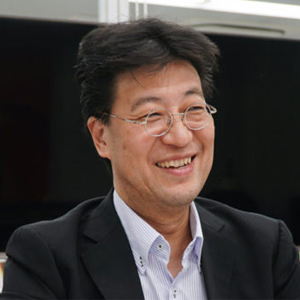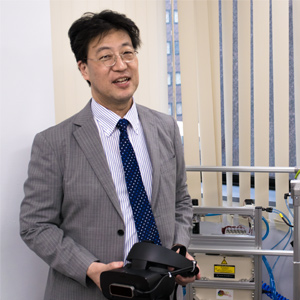THANK YOU FOR SUBSCRIBING

Santoku Corporation: Harness the Power of VR to Improve Safety

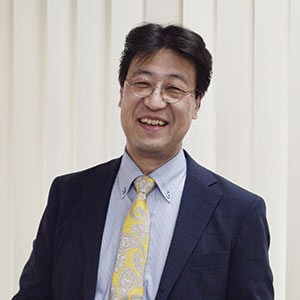 Susumu Matsuda, Director
Susumu Matsuda, DirectorAll these possibilities have become a tangible reality with Virtual and Augmented Reality (VR/AR). Thanks to its immersive capabilities, the technology is allowing humans to experience the world in a new way. VR is no more confined to the entertainment world. The technology is already making inroads into diverse fields beyond just gaming and entertainment, where it first became popular. VR/AR technology promises the way how humans learn, make decisions, and interact with their surroundings. The potential benefits of VR in safety education are apparent, wherein the technology brings real-world experiences for users without exposing them to real-world dangers. While industries involving machinery, operations prioritize safety and health issues above all, the magic of VR presents an opportunity to control various hazards leading to occupational injuries and illnesses with next-generation safety training and education.
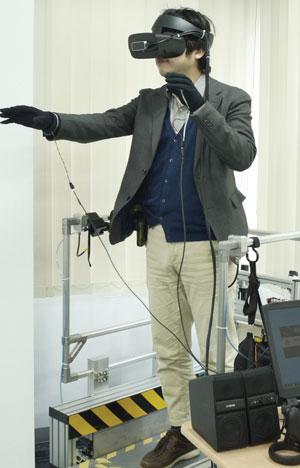
If there’s one organization that warrants credit for the advancement of VR in the field of safety education, it is Santoku Corporation. Having recognized the benefits of VR in the spectrum of safety training early on, Santoku is singularly focused on improving safety and security education through innovative VR techniques. The company empowers its clients with solutions for industrial fastening techniques, miscellaneous machines for electric circuit board, and to create customized content for implementing three-dimensional authorization tools. “Santoku has more than 20 years of experience in developing skills training simulators and more than ten years in providing services in the field of safety education,” says Susumu Matsuda, Director, Santoku Corporation. Apart from services pertaining to VR technology, Santoku is also a system integrator that can provide comprehensive services along with microcomputer designed (including hardware and firmware), machine vision processing, and mechatronics design.
At the core, Santoku’s foray into the realm of VR is backed by its unprecedented experience in leveraging 3D data to improve safety. Back in the day, Santoku’s arrival into the 3D business was led by Matsuda, a highly-experienced mechanical engineer, who presently oversees the VR business. To reduce disasters in society, Matsuda continues to lead his team at Santoku to create a mechatronics powered by 3D data and state-of-the-art technologies like VR. He firmly believes that the dangerous physical experience training using VR can be beneficial in various fields. In essence, Santoku is meeting the need for an educational system that uses VR to effectively and directly change people’s awareness from a psychological standpoint, and if used appropriately, can achieve a highly effective educational system.
Santoku has more than 20 years of experience in developing skills training simulators and more than ten years in providing services in the field of safety education
While innovation remains the wellspring of Santoku’s growth, the company’s journey in developing high-quality VR solutions and applications has been focused on overcoming specific complexities in this arena. As such, Matsuda touches upon the challenges that come in the way of implementing the sophisticated VR technology for safety education. Firstly, technology doesn’t always gel with human perception. Organizations need a new VR system that transmits intuitively and smoothly by reproducing the complex senses of sight, hearing, touch, and smell. “However, the challenge is to provide a VR system that automatically tunes to each person’s experience, ability, and sensitivity,” he adds. This is where Santoku is in a class by itself.
Santoku provides KYRisk prediction videos of vulnerable people’s disasters, traffic disasters, natural disasters, and occupational accidents. For industrial accidents, the company offers standard products as well as custom products. To impart safety education to employees across diverse industries, Santoku has developed its VR software—RiMM—for providing hands-on learning, response training, and information disclosure methods to eliminate accidents in workplaces. The software allows users to experience and train dangerous events (accidents) safely and effectively by reproducing the five senses (visual, hearing, touch, smell) in VR. It demonstrates the dangers present in the workplace explicitly and stimulates the essential intuition of human beings, making them feel psychologically scared and unpleasant, and enhances risk sensitivity. One of its kind, RiMM is a unique simulation software specialized for safety and security education.
RiMM’s uniqueness stems from its sharp focus on increasing safety. “We look at VR from the opposite perspective of entertainment. Currently, we leverage VR while aiming to move people’s hearts,” says Matsuda. RiMM stimulates more than three human senses for increasing risk sensitivity. In doing so, RiMM is powered by VR technology to stimulate the senses that have a high learning effect and 96 percent or more identical to the experience. Matsuda believes that each person experiences a dangerous event or fear differently. Overcoming this central obstacle requires adjusting the strength of that sensation of fear appropriately to suit each participant’s characteristics. This is where RiMM divides recreated senses into multiple stages and has a mechanism that allows for adjusting the intensity level during the simulation. At this stage, an individual participant’s specifications are evaluated with a pre-simulation questionnaire, and an appropriate intensity level is selected. An experience like this where the intensity level has been adjusted stimulates the same psychological response as an actual real-life experience. That effect can leave an impression of the sense of danger in mind (of the user) and can be remembered as a heightened awareness of risk. With this, a user’s sense of awareness can be changed, making them more sensitive to danger.
RiMM’s hazard mapping function can record the situation at the site (photograph, writing, text, voice) using a small mobile terminal (Apple iOS device). Also, the latitude and longitude at the time of recording are acquired with GPS and are saved in the terminal. The information is registered when the mobile device connected to the central server and is automatically recorded on the map. Users can share information using a display terminal connected to a browser. On the other hand, RiMM’s 360-degree live-action recording and VR view feature allows the users to bring a camera directly to the scene and take a picture or video using the 360-degree VR camera. The images are captured in high-definition 4K images and recorded in 3D so that clients can check the local situation as if they were at the scene.
3D scan data used in Santoku’s VR software uses several data format conversion tools.
For instance, in the decommissioning nuclear power plant simulator, a part that changes every moment is acquired by a 3D scanner. The imported data is mixed with 3D polygon data for efficient work cases and process study. From 3D modelling and animation to scan programming, RiMM imports data into its Scenario Editor that leverages GUI programming to enable operation mode.
Customized to Diverse Needs
While designing and developing interactive 3D software/image processing/embedded microcomputer, Santoku proposes the optimum system that fits the needs of the users. From market research, concept design, elemental technology development to product prototyping, the company provides consistent services centered on software development.
By using cyclone philosophy (a method of repeating system provision, customer evaluation, and feedback improvement), Santoku eliminates image inconsistency between the development side and the user, increasing user satisfaction. “Based on the 200 cases that have been developed over the last two decades, a function library effective for training simulation has been created,” informs Matsuda. The functions are disassembled according to the customer’s request, and the developed functions use this library, and the undeveloped products are newly developed, and the library is updated. “We used this simulators function library for VR prototyping,” he adds.
“We look at VR from the opposite perspective of entertainment. Currently, we leverage VR while aiming to move people’s hearts. Aiming for a safer society”
Putting theory into practice provides several successful examples of Santoku’s software in action. For instance, the utilization of Santoku’s simulators in a nuclear power plant. To safely perform the decommissioning work of a nuclear power plant, the software with a simulation function remotely operates a robot, and the actual work situation is sequentially reproduced in a simulation environment using CAD and laser measurement to ensure safe and efficient work. The company has also been developing additional functions for three years since the release of the simulator. Furthermore, to protect the nuclear power plant from terrorism, it is equipped with a mechanism to simulate the emulation function of protective equipment and learn the optimal protective equipment design by changing the layout. This security simulator for nuclear non-proliferation has been recognized as one of the IAEA educational programs. It has been used for education for seven years. Since last year, Santoku is working on developing an extended simulator that includes new functions.
Seeking New Frontiers
Drawing on its almost 70 years of rich legacy Santoku has been fueling innovation across its business processes and continues seeking new frontiers. Moving ahead, Santokustrives to make conscious efforts to expand its RiMM software across borders and overseas and empower organizations in diverse industries with world-class security and safety education.
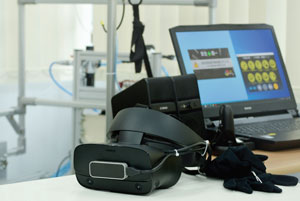
To preserve the rich heritage of Japan and its security and safety standards, Santoku is geared to contribute to the global landscape. “The RiMM business has grown because Japan is a country that has taken safety seriously. Recently, awareness of safety has been reviewed, especially in emerging countries. At every worksite, there is a danger of accidents. To reduce such events, we will continue educating organizations through our safety simulator,” says Matsuda.
In conclusion, backed by a culture of constant excellence, Santoku is changing the game in safety and security with VR and mechatronics, making the world a safer place.
Customized to Diverse Needs
While designing and developing interactive 3D software/image processing/embedded microcomputer, Santoku proposes the optimum system that fits the needs of the users. From market research, concept design, elemental technology development to product prototyping, the company provides consistent services centered on software development.
By using cyclone philosophy (a method of repeating system provision, customer evaluation, and feedback improvement), Santoku eliminates image inconsistency between the development side and the user, increasing user satisfaction. “Based on the 200 cases that have been developed over the last two decades, a function library effective for training simulation has been created,” informs Matsuda. The functions are disassembled according to the customer’s request, and the developed functions use this library, and the undeveloped products are newly developed, and the library is updated. “We used this simulators function library for VR prototyping,” he adds.
“We look at VR from the opposite perspective of entertainment. Currently, we leverage VR while aiming to move people’s hearts. Aiming for a safer society”
Putting theory into practice provides several successful examples of Santoku’s software in action. For instance, the utilization of Santoku’s simulators in a nuclear power plant. To safely perform the decommissioning work of a nuclear power plant, the software with a simulation function remotely operates a robot, and the actual work situation is sequentially reproduced in a simulation environment using CAD and laser measurement to ensure safe and efficient work. The company has also been developing additional functions for three years since the release of the simulator. Furthermore, to protect the nuclear power plant from terrorism, it is equipped with a mechanism to simulate the emulation function of protective equipment and learn the optimal protective equipment design by changing the layout. This security simulator for nuclear non-proliferation has been recognized as one of the IAEA educational programs. It has been used for education for seven years. Since last year, Santoku is working on developing an extended simulator that includes new functions.
Seeking New Frontiers
Drawing on its almost 70 years of rich legacy Santoku has been fueling innovation across its business processes and continues seeking new frontiers. Moving ahead, Santokustrives to make conscious efforts to expand its RiMM software across borders and overseas and empower organizations in diverse industries with world-class security and safety education.

To preserve the rich heritage of Japan and its security and safety standards, Santoku is geared to contribute to the global landscape. “The RiMM business has grown because Japan is a country that has taken safety seriously. Recently, awareness of safety has been reviewed, especially in emerging countries. At every worksite, there is a danger of accidents. To reduce such events, we will continue educating organizations through our safety simulator,” says Matsuda.
In conclusion, backed by a culture of constant excellence, Santoku is changing the game in safety and security with VR and mechatronics, making the world a safer place.
May 05, 2020

Virtual humanoid that evolves and brings peace of mind
Susumu Matsuda, Director, SANTOKU CORPORATION
I agree We use cookies on this website to enhance your user experience. By clicking any link on this page you are giving your consent for us to set cookies. More info

